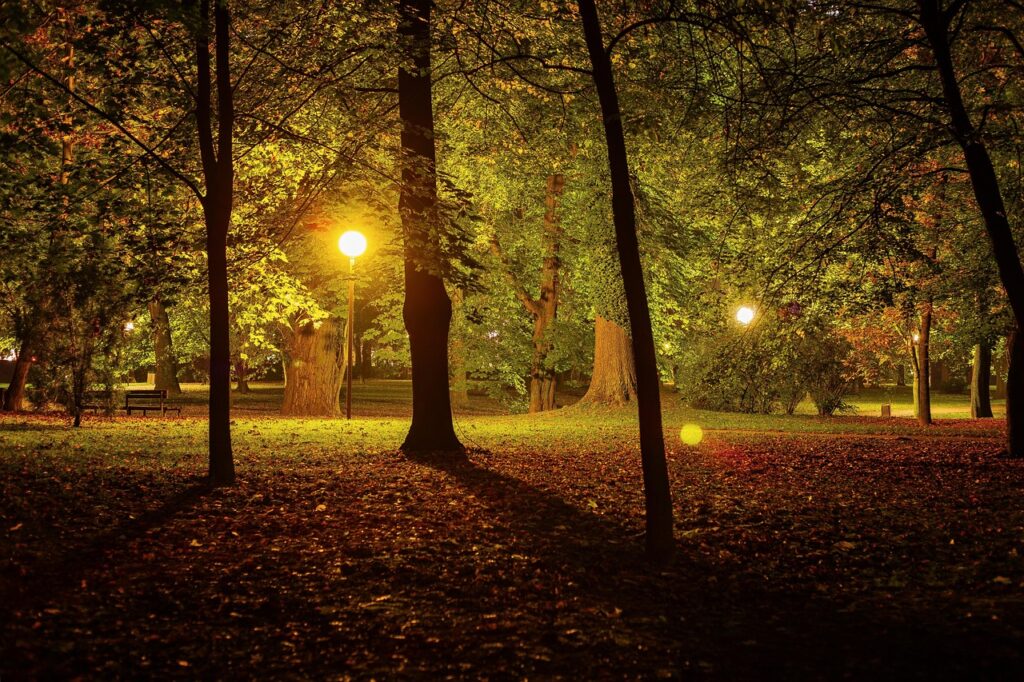How to Protect Nocturnal Pollinators From Light Pollution in Your Community
go.ncsu.edu/readext?1081959
en Español / em Português
El inglés es el idioma de control de esta página. En la medida en que haya algún conflicto entre la traducción al inglés y la traducción, el inglés prevalece.
Al hacer clic en el enlace de traducción se activa un servicio de traducción gratuito para convertir la página al español. Al igual que con cualquier traducción por Internet, la conversión no es sensible al contexto y puede que no traduzca el texto en su significado original. NC State Extension no garantiza la exactitud del texto traducido. Por favor, tenga en cuenta que algunas aplicaciones y/o servicios pueden no funcionar como se espera cuando se traducen.
Português
Inglês é o idioma de controle desta página. Na medida que haja algum conflito entre o texto original em Inglês e a tradução, o Inglês prevalece.
Ao clicar no link de tradução, um serviço gratuito de tradução será ativado para converter a página para o Português. Como em qualquer tradução pela internet, a conversão não é sensivel ao contexto e pode não ocorrer a tradução para o significado orginal. O serviço de Extensão da Carolina do Norte (NC State Extension) não garante a exatidão do texto traduzido. Por favor, observe que algumas funções ou serviços podem não funcionar como esperado após a tradução.
English
English is the controlling language of this page. To the extent there is any conflict between the English text and the translation, English controls.
Clicking on the translation link activates a free translation service to convert the page to Spanish. As with any Internet translation, the conversion is not context-sensitive and may not translate the text to its original meaning. NC State Extension does not guarantee the accuracy of the translated text. Please note that some applications and/or services may not function as expected when translated.
Collapse ▲The following article was authored by Jordan Forbis, NC A&T State University Extension Summer Intern with the Orange County Center
Growing up in a rural neighborhood in Graham, seeing the stars at night was always a given for me. I was far enough removed from any major cities that I was able to look up and see so many stars that I could almost make out the Milky Way. When I moved to Chapel Hill in 2018, I was disappointed to see that many of my familiar stars were no longer visible. This experience may be familiar to many, and you may even recognize it as a result of light pollution. What you may not know is that the effects of light pollution go far beyond blotting out the stars’ light from the night sky. In this article, I will discuss what light pollution is, how it affects nocturnal pollinators, and ways you can mitigate the effects of light pollution in your yard, neighborhood, and community at large.
What is light pollution?
Light pollution can be broken into 3 different categories, which the National Park Service defines: glare, light trespass, and skyglow. Glare is light that interferes with vision. Light trespass occurs when artificial light is unintentionally spread outside the intended property and space. Lastly, skyglow occurs when human-caused light scatters in the atmosphere and brightens the night sky. This is the type of light pollution that blocks my view of the stars in Chapel Hill.
How does it affect nighttime pollinators?
Like humans, animals have a circadian rhythm. Natural light regulates this 24-hour sleep-wake cycle, along with hibernation and migration patterns (Gilkeson 2023). Light pollution disrupts these cycles, and can even change the sleep and activity patterns of plants and animals.
This artificial light “alters plant physiology, as well as pollinator perception and behavior, producing measurable—albeit variable—outcomes for plant reproduction” (Youngsteadt and Keighron 2023).
In North Carolina, fireflies are always a welcome visitor on warm summer evenings. Much like nocturnal pollinators, their nightly routines are likely disrupted by light pollution. They are observed to avoid bright ambient lights, including nights when the moon is full. It is also believed that bright artificial light can hinder fireflies’ ability to signal and communicate with each other, potentially disrupting mating (Firefly Conservation and Research). This results in fewer fireflies reproducing each year.
How to mitigate light pollution and protect nighttime pollinators
If you want to help our nighttime neighbors, there are a few key things you can do. Firefly Conservation and Research explains a simple solution: keep external light off at night when you are not outside. If you do need to have lights on, make them motion-activated or put them on a timer so they are off when not in use. Along with this, closing blinds and curtains can help limit the amount of light that escapes your house after dark.
If you are willing and able, another course of action is to plant a moon garden. These gardens are designed to be welcoming to nocturnal pollinators, particularly moths (Conserving Carolina). These creatures are important, not just as pollinators, but also in supporting a healthy ecosystem for birds and bats (Brenner 2018). The caterpillars of moths are essential to birds during the breeding season, as they are a primary part of the insect diet that 96% of terrestrial birds rely on to rear their chicks (Brenner 2018). Brenner also points out that it takes between 6,000-9,000 caterpillars for the Carolina Chickadee, a familiar bird to many North Carolinians, to rear a single clutch of offspring of 4-6 chicks! Adult moths are also a vital part of many insectivorous animals, including bats (Butterfly Conservation). There are many plants that feed daytime and nighttime pollinators, but the U.S. Fish & Wildlife Service has a few tips to target nocturnal pollinators. They recommend incorporating plants in your moon garden that are “vibrant pale shades” and “native plants with flowers that are shades of white, cream, silver, pale pink, and pale lavender.” Along with this, the U.S. Fish & Wildlife Service mentions that yucca and agave have night-blooming flowers that are ideal for a moon garden. They even suggest incorporating a reflective globe, colorful yard figures, and a water feature into your moon garden.
Taking these steps can help ensure that we provide a healthy habitat for our firefly friends as well as all of our nocturnal pollinators. Even something as simple as turning off exterior lighting can make a big difference in limiting light pollution and helping our nocturnal pollinators.
—
References:
About Light Pollution. (1 C.E., January 1). Firefly Conservation & Research.
Creating a spellbinding moon garden for night pollinators. (2021, October 28). U.S. Fish & Wildlife Services.
Brenner, K. (2018, April 1). Working the Night Shift. National Wildlife Federation.
Butterfly Conservation. (n.d.). Why moths matter. Butterfly Conservation.
Gilkeson, J. (2023, July 31). Dim the lights for pollinators and plants at night. U.S. Fish & Wildlife Service.
Habitat At Home. (2023, July 25). Moth Gardens and Moon Gardens. Conserving Carolina.
Moorman, C., Megalos, M., & Bowen, L. (2024, May 28). Bats Working With Wildlife. NC State Extension Publications.
National Park Service. (n.d.). Light Pollution.
Youngsteadt, E., & Keighron, M. C. (2023, August 8). Urban Pollination Ecology. Annual Reviews.






